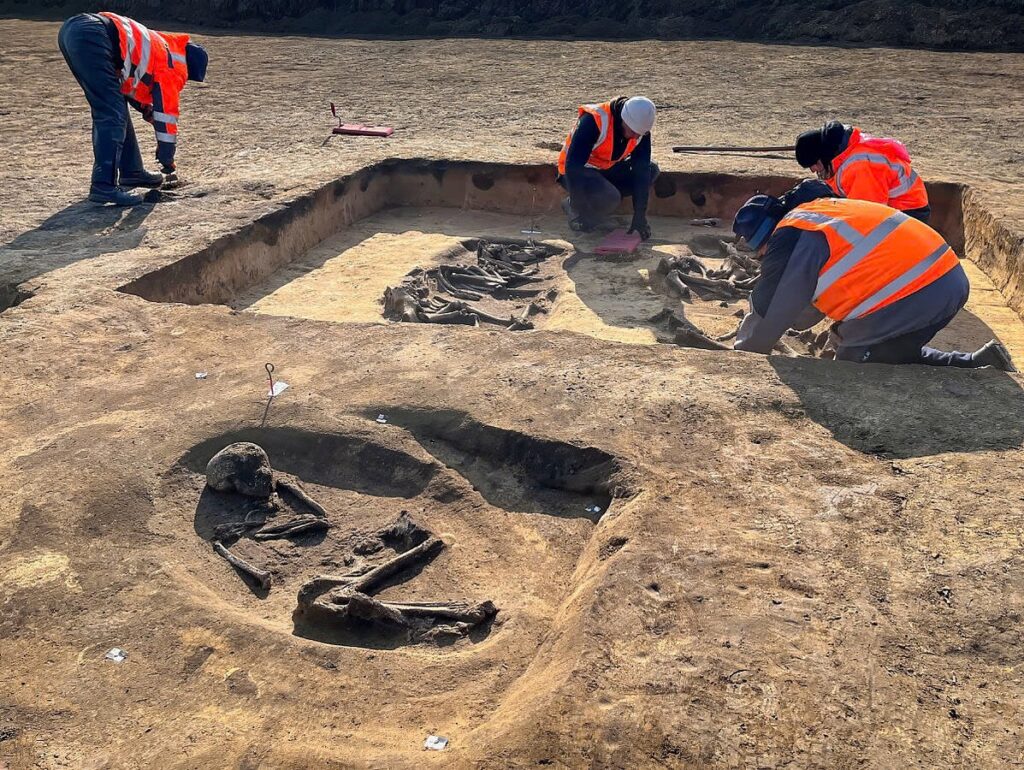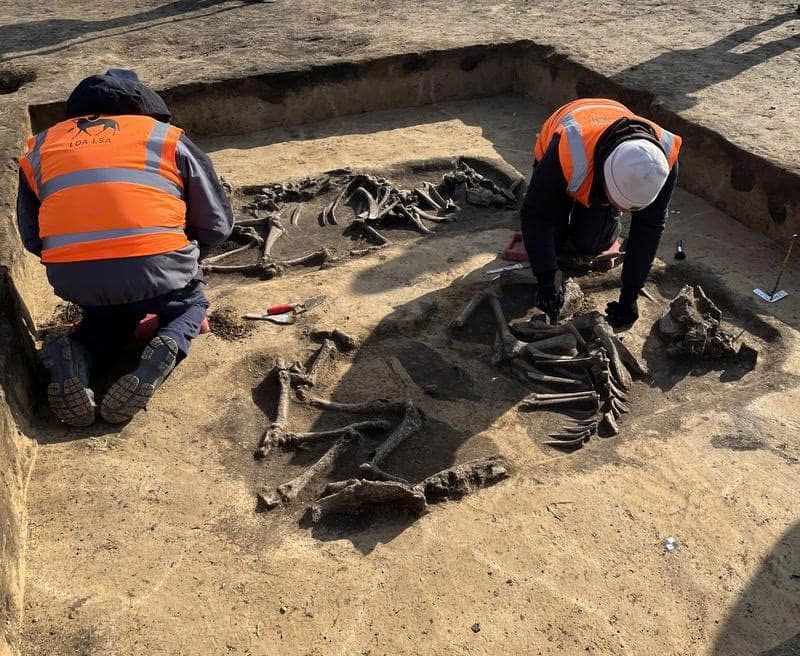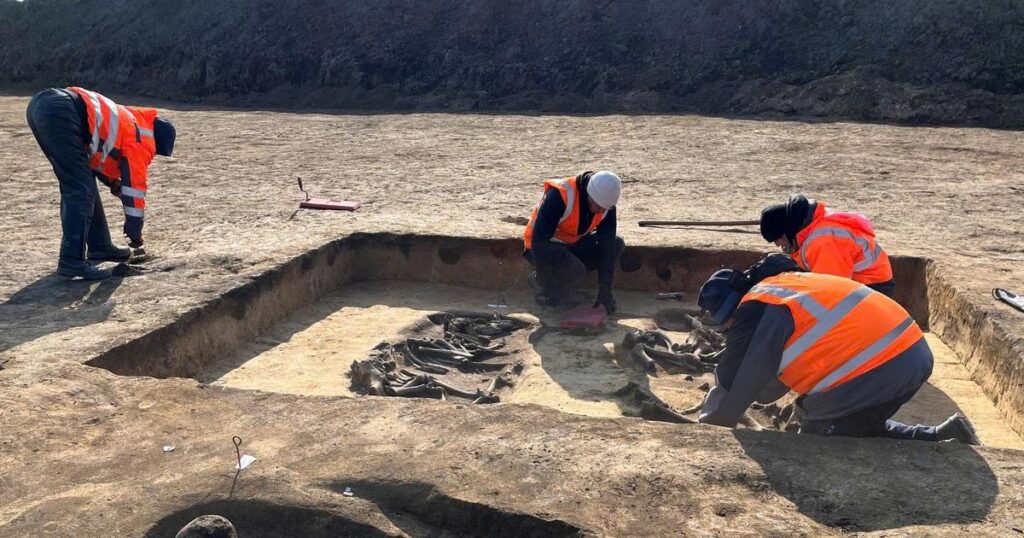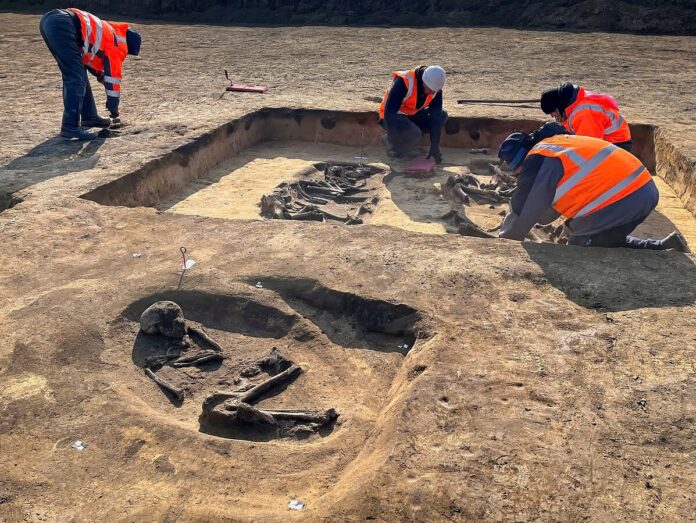Neolithic Mounds Discovered Near Magdeburg
Intel Construction Leads to Remarkable Archaeological Finds

In a striking turn of events, the planned construction of a semiconductor plant by US chip manufacturer Intel has led to an extraordinary archaeological discovery near Magdeburg, Germany. Archaeologists from the State Office for Heritage Management and Archaeology Saxony-Anhalt (LDA) have unearthed a significant Neolithic burial landscape on the Eulenberg, dating back approximately 6,000 years.
Two Monumental Mounds Reveal Ancient Burial Practices
The excavation unveiled two monumental mounds, separated by 200 meters, each containing multiple burials within wooden grave chambers. These trapezoidal chambers, measuring between 20 and 30 meters in length, offer a glimpse into the burial practices of the Baalberge Group, a late Neolithic culture that inhabited Central Germany and Bohemia from 4100 to 3600 BC.

A Corridor of Ritual and Sacrifice
Perhaps even more intriguing is the discovery of a processional route between the mounds, used around 1,000 years after their construction. During the Globular Amphora Culture period (3300-2800 BC), this corridor became a site of ritual sacrifice, where young cattle were buried alongside human remains. One particularly fascinating arrangement suggests the symbolic representation of a cart with a driver or a plow pulled by cattle, highlighting the importance of livestock in ancient society.
Enduring Sacred Ground

The site’s significance persisted through the ages, with evidence of continued use approximately 1,000 years later. A palisade ditch, incorporating the larger of the two burial mounds, was constructed along the former processional route, carefully preserving the earlier cattle burials. Additionally, several Corded Ware Culture burial mounds from around 2800-2050 BC were found nearby, further emphasizing the area’s long-standing ritual importance.
Racing Against Time
As Intel’s construction plans loom, archaeologists are working diligently to complete their excavations by the end of April. This race against time underscores the delicate balance between progress and preservation, as efforts continue to document and understand this remarkable piece of Germany’s archaeological heritage before it gives way to modern development.

